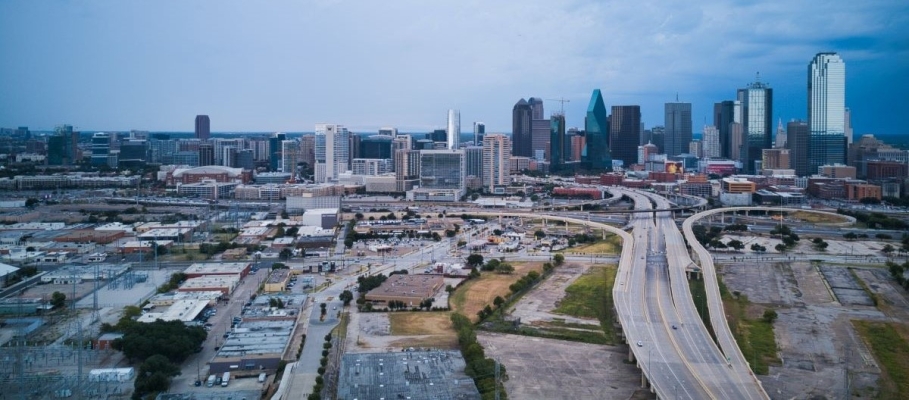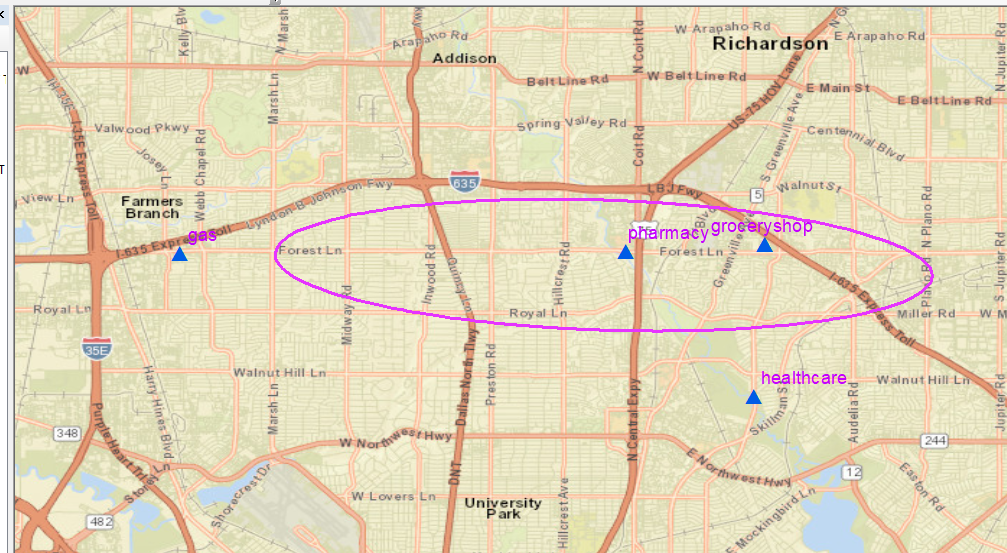How Older Vietnamese Immigrants Get Around Town: Research Addresses Transportation Struggles

How do you get from point A to point B? Maybe you bike or take public transit to get to work or school. Perhaps you drive to places that may be farther away, like medical appointments or friends’ houses. Imagine that you didn’t have access to many transportation options—maybe you were unable to drive a car, or the nearest bus stop was several miles away. This is the reality for many folks as they grow older, and their loved ones must then help them get where they need to go.
Older immigrants often live in low-density urban environments, or places where they need to use an automobile of some sort and have limited access to public transportation (like the Dallas-Fort Worth metroplex). This could potentially add stress to both the older folks and the private ride providers who help with transportation. The providers may be at risk for the burden and stress of caregiving, and the older immigrants may lack transportation to important social or health opportunities if the providers they rely on are not available.
Researchers at the University of Texas, Arlington and the University of Connecticut teamed up to fill a gap in the knowledge of the elderly Vietnamese immigrant population in DFW. They sought to learn about the transportation behaviors not only of the Vietnamese adults but also of their ride providers. By increasing knowledge of the transportation needs of these groups, resources and options could be established to improve both parties’ qualities of life.
THE RESEARCH
To determine the patterns of transportation that older Vietnamese people follow and their impacts, the researchers split their work into a Phase One and a Phase Two. Phase One surveyed eighty-four Vietnamese participants aged sixty-five or older from different households, and Phase Two surveyed twenty people who provide rides to older Vietnamese adults. These surveys were disseminated via a variety of methods, including flyers, magazines, online postings, and word of mouth. Questions prompted respondents to indicate details about demographics, transportation, their routine activities, and COVID-19. Surveys for Phase One also included several questions regarding health and well-being, such as perceived social support and multimorbidities. The phases occurred simultaneously between July 2020 and January 2021.
The surveys collected data that researchers then used to build activity spaces, or maps of the areas in which respondents conduct their daily activities. Picture in your town your home, work, grocery store, and maybe school and hospital. These locations and the general paths you take to get to them would generate your activity space. If your destinations are farther away, and if you travel to them more frequently, then the size of your activity space increases.
An example of a regular activity space. The older adult’s activities are represented by the triangles. © 2022, Mahshid Haque
Both phases’ participants received regular activity spaces, but the Phase Two participants additionally received ride-provision activity spaces (RPAS). These special activity spaces for ride providers only considered the area within which the providers needed to travel to transport their passengers. When RPAS were compared with the Phase Two participants’ regular activity spaces, burden indicators were identifiable. Burden indicators provided ways to quantify the effort it took to transport the older folks. The three indicators were
- the size of the RPAS (a small and clustered space is easier to navigate than a sprawling space),
- the percentage of the RPAS that was not “accessible” to the ride provider (that is, is was outside the bounds of the provider’s regular activity space), and
- the ratio of inaccessible RPAS to the ride provider’s regular activity space (similar to the percentage, but taking into account whether the provider was used to taking longer rides daily).
IMPLICATIONS
The results of the surveys and activity space maps revealed that not all Vietnamese immigrants relied on ride providers; 49 percent drove themselves places. Those dependent on rides had significantly smaller activity spaces and more diagnosed medical conditions than those who drove themselves. Ride-dependent folks reported sometimes missing social and health opportunities due to lack of transportation. Not many used public transit and indicated that they did not know how, revealing the automobile dependence of the area. All ride providers were Vietnamese, owned automobiles, and drove themselves for transportation. Perhaps counterintuitively, providers giving fewer rides per month shouldered a greater level of burden. This suggests that those rides being given fall well beyond the provider's general activity space. In other words, fewer rides are given by those providers because they have to go more out of their way.
This study implies that public transit should be made easier to use for older Vietnamese immigrants so that they don’t have to miss opportunities should their rides fall through. Additionally, ride providers would benefit by not having to take on the monetary and time burdens associated with providing transportation. One actionable step is to provide additional marketing and educational materials about public transit in Vietnamese, to increase the Vietnamese community's awareness of transit options.
This research was funded by the National Institute for Transportation and Communities, with additional support from the Department of Civil Engineering, the School of Social Work, the Office of Research at the University of Texas at Arlington, the University of Connecticut, Catholic Charities Fort Worth, the Gayle Wells Foundation, the Roosevelt Vietnamese Activity Center/Arlington Adult Health Care, Sixty & Better, and Juana Perez.
Photo by Daniel Halseth on Unsplash
ABOUT THE PROJECT
Rebecca Mauldin, University of Texas, Arlington; Stephen Mattingly, University of Texas, Arlington; Rupal Parekh, University of Connecticut
RELATED RESEARCH
To learn more about this and other NITC research, sign up for our monthly research newsletter.
- Understanding Connections Between Mobility, Transportation, And Quality Of Life In Refugee Communities In Tucson, Arizona
- The Impact of Ride Hail Services on the Accessibility of Nonprofit Services
- How Can Interdisciplinary Teams Leverage Emerging Technologies to Respond to Transportation Infrastructure Needs? A Mixed-Methods Evaluation of Civil Engineers, Urban Planning, and Social Workers’ Perspectives
The National Institute for Transportation and Communities (NITC) is one of seven U.S. Department of Transportation national university transportation centers. NITC is a program of the Transportation Research and Education Center (TREC) at Portland State University. This PSU-led research partnership also includes the Oregon Institute of Technology, University of Arizona, University of Oregon, University of Texas at Arlington and University of Utah. We pursue our theme — improving mobility of people and goods to build strong communities — through research, education and technology transfer.

